 JIM SMART
.
May 19, 2022
.
Ford
JIM SMART
.
May 19, 2022
.
Ford
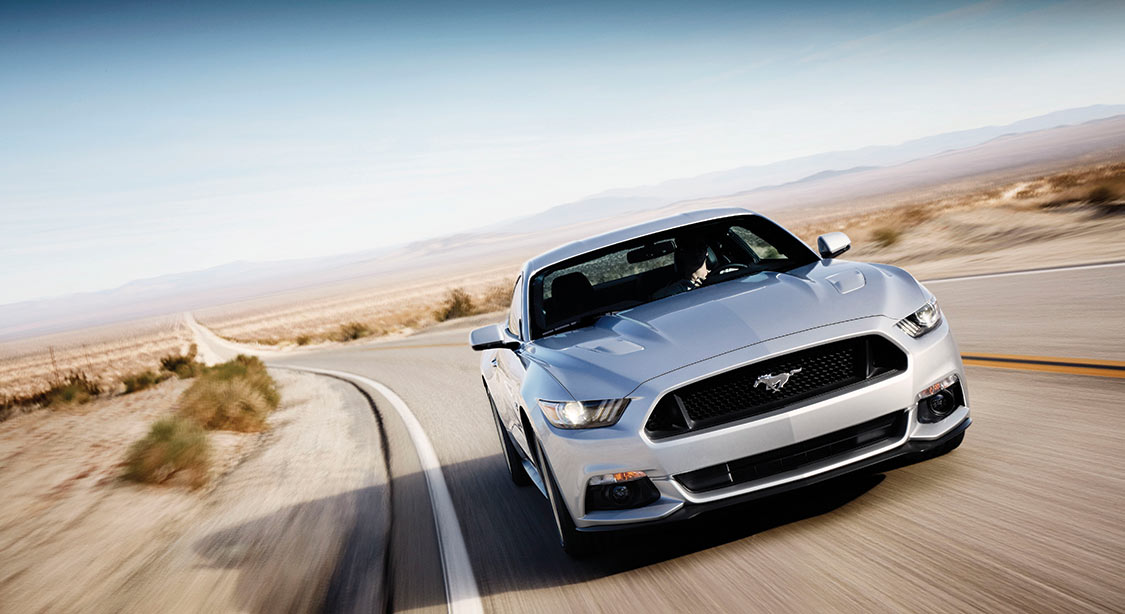
Baby boomers will remember the Mustang’s gala introduction a half-century ago when Ford consumed commercial time on a Friday night on all three television networks (there were only three then) to announce a new kind of car for the American masses, Ford Mustang. The darned thing was sporty and it was cheap and everyone just had to have one even if they didn’t need a second or third car. If nothing else, a new Mustang made for great driveway art. At a base sticker price of $2,368, not including shipping and prep, it was the smoking deal of the twentieth century. It offered a sporty skin, bucket seats, floor shift and a V-8 for the price of a Falcon.
Mustang has come a long way in 50 years; it’s definitely not the affordable moniker it once was. Although, it’s certainly an excellent value for the money with advanced technology, styling and cool creature comforts we couldn’t have fathomed in a sporty car in 1964. What makes the Mustang truly different for 2015 is its world-beating demeanor. It isn’t just a hot car for the American highway anymore, it’s a true car of the world, redesigned from the inside out for mass appeal on seven continents and untold numbers of countries. Deep within this American-born icon beats the heart of Mustang, yet with broader appeal thanks to the choice of three engines and a huge array of options.
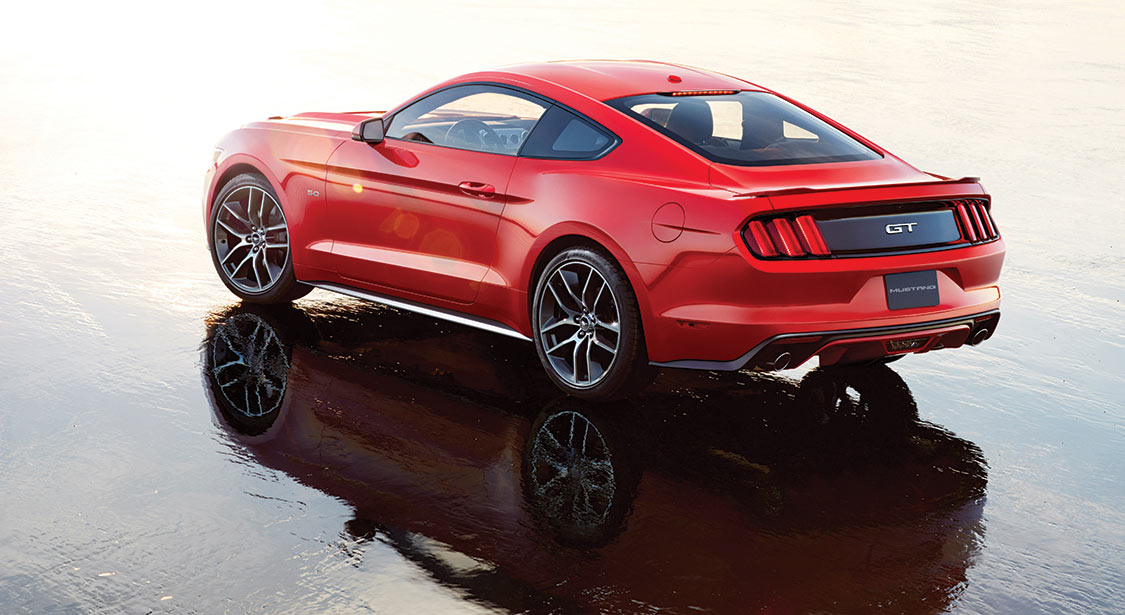
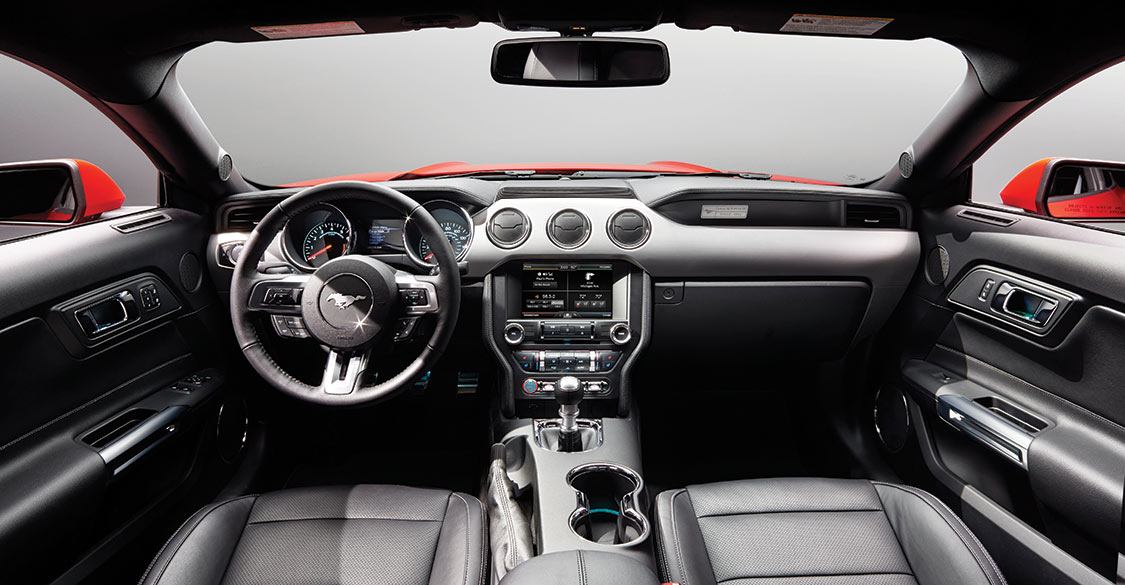
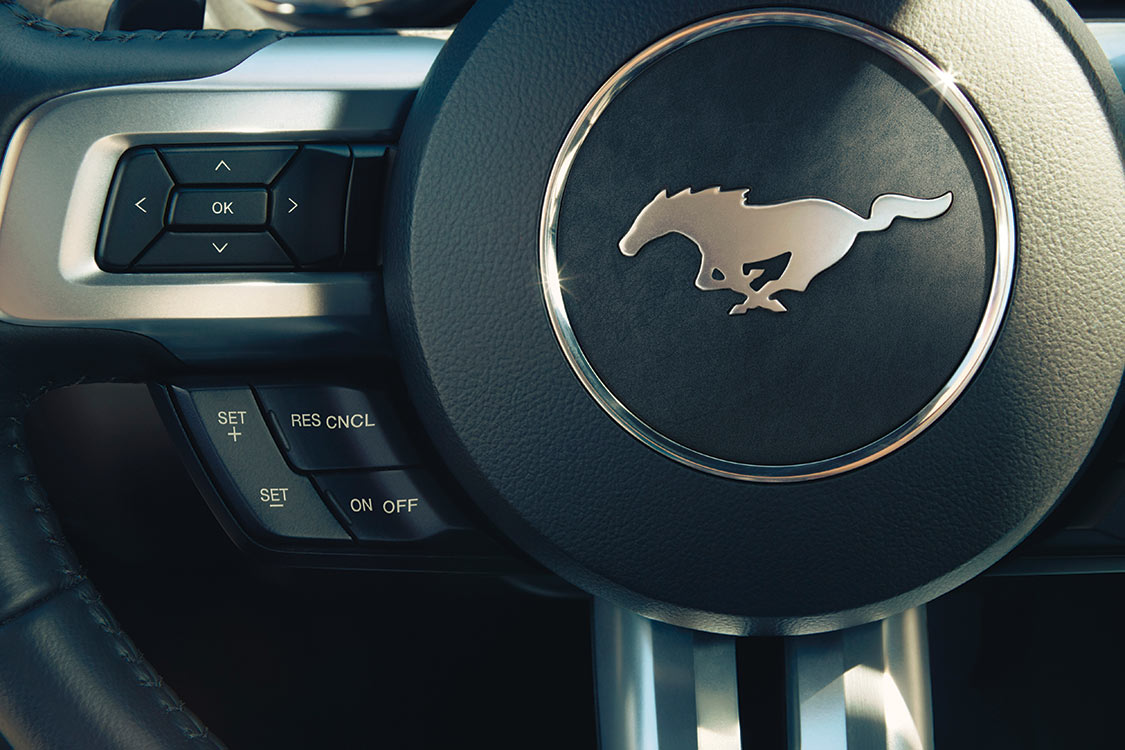
For the first time since 1993, four-cylinder power is back, but not like your grandmother’s Mustang LX. This time, four-cylinder power is optional with Ford’s new EcoBoost yielding the power of a V-6 from four holes. Standard power is the double overhead cam 3.7L 24-valve V-6, which is incredible when you consider it offers more power than the ’65 Mustang’s 289 high-performance V-8 or even the hot 290-horse Boss 302. The Coyote 5.0L 32-valve V-8 is back with even more power in store for 2015 at 420 hp/390 tq.
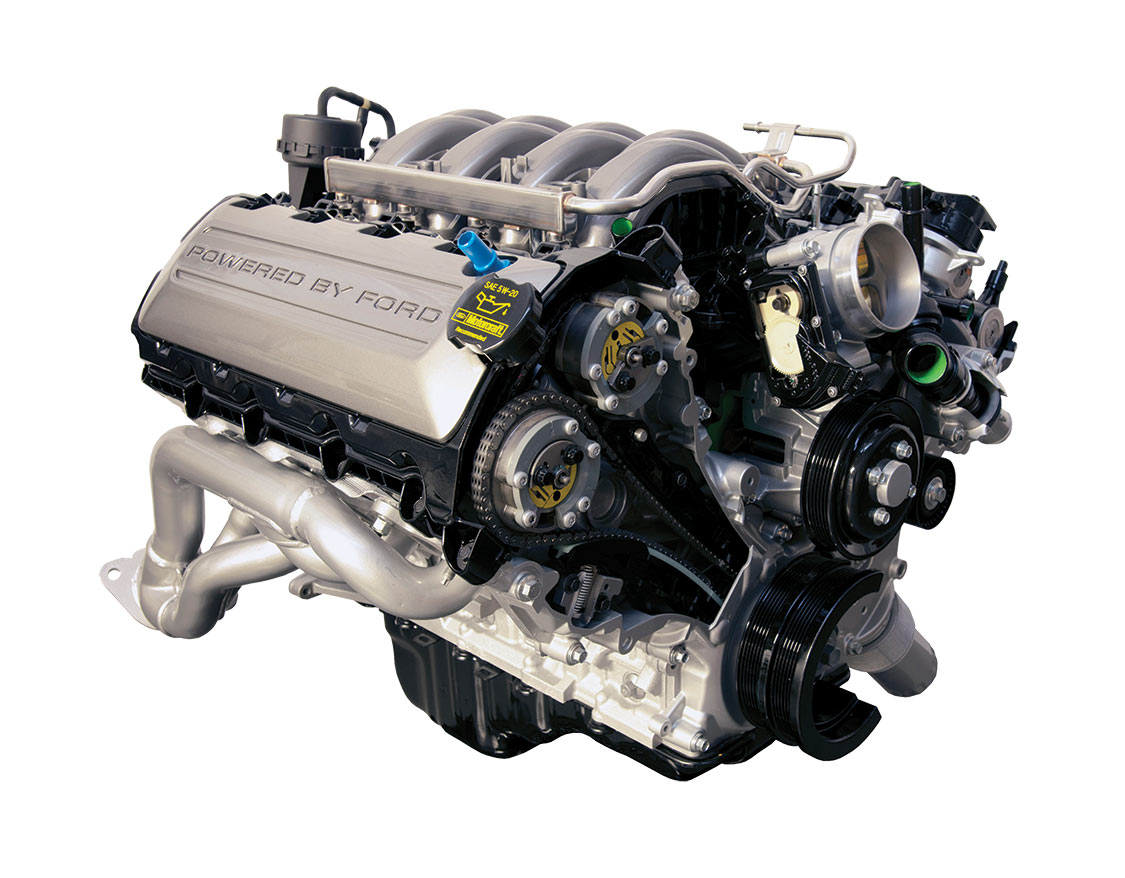
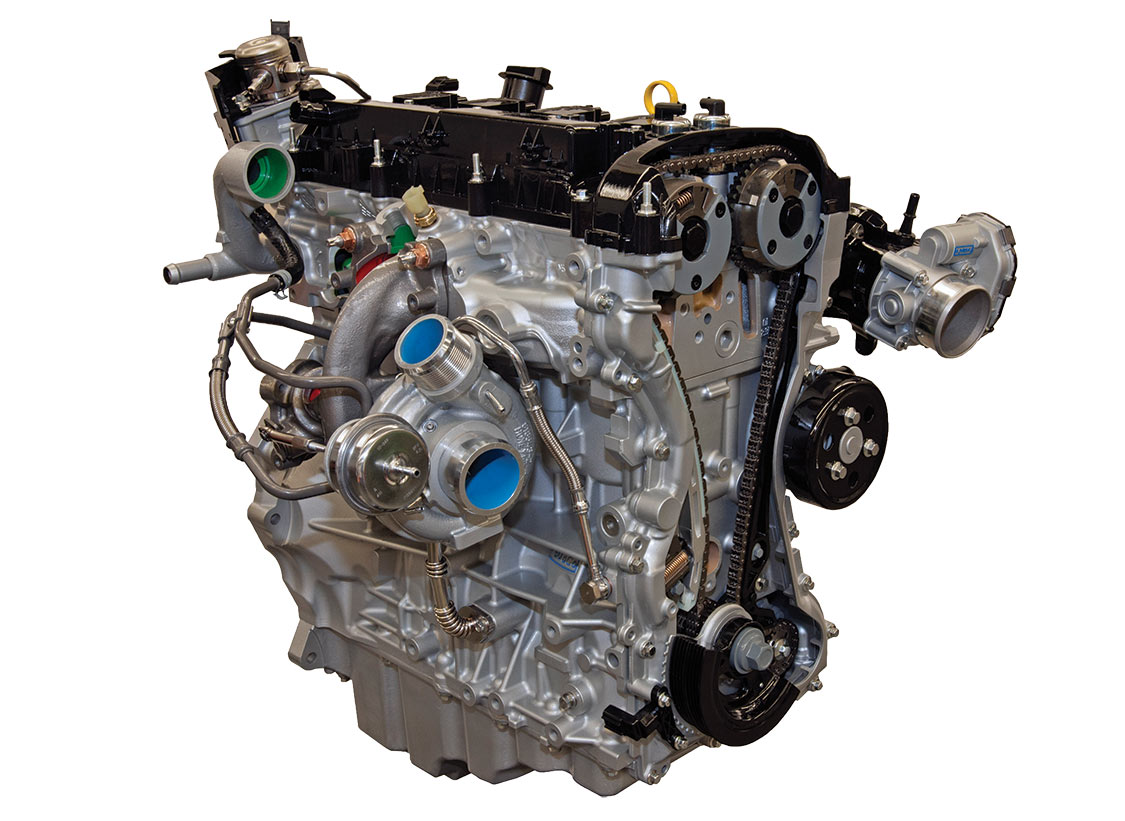
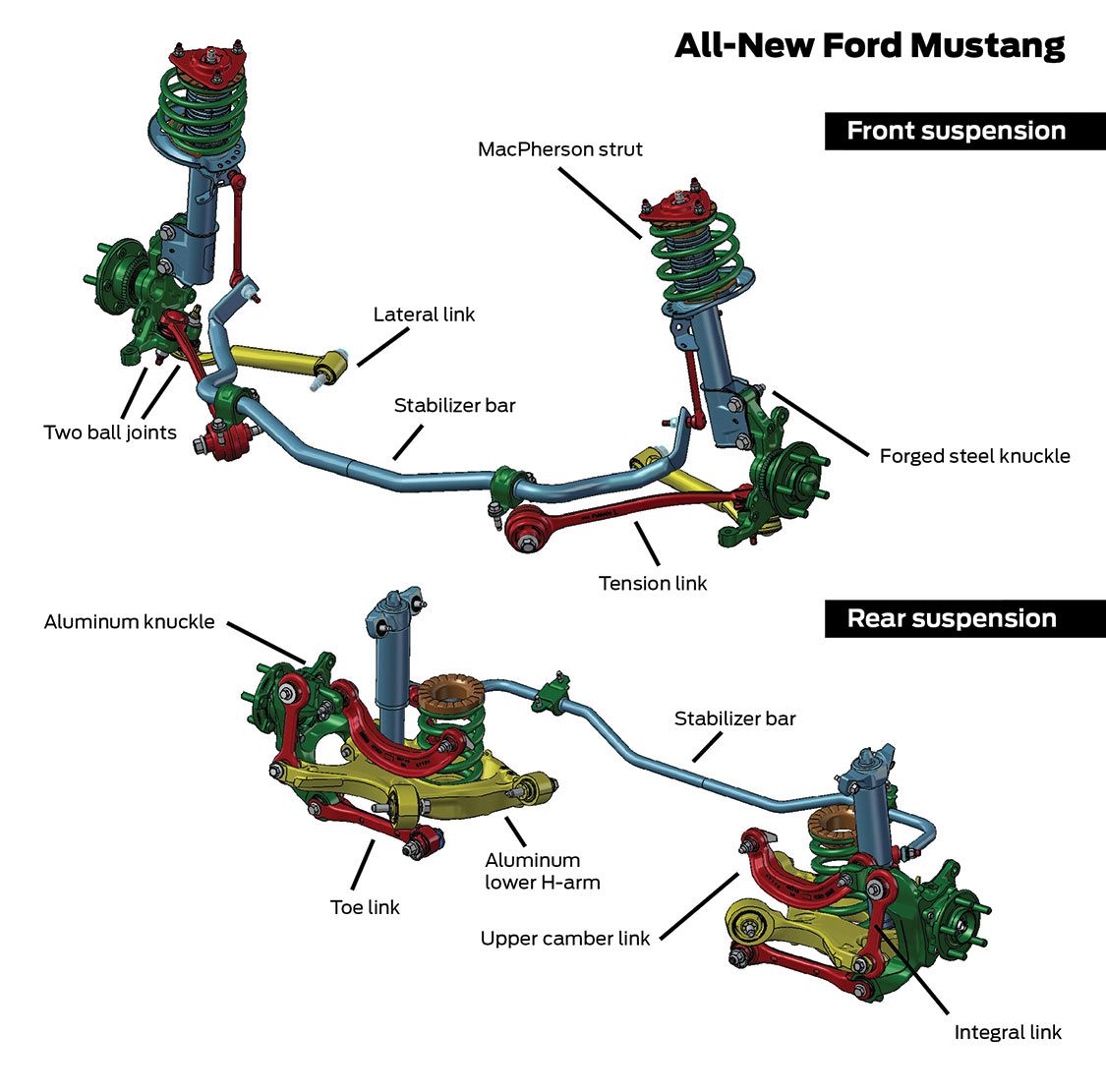
In 50 years of Mustang evolution, there’s never been a Mustang like this one. “Ford Mustang inspires passion like no other car,” Raj Nair, Ford’s group vice president for global operations said of the born-again pony. He further describes Mustang as the heart and soul of Ford Motor Company, and indeed it is.
If you’re a progressive thinker, the new Mustang is the right car at the right time with styling and a wider stance that fit the era. Traditionalists don’t care for the car because it doesn’t resemble the original ’65 Mustang. Hint, hint—it’s not supposed to. Mustang styling has always fit the times. The downsized ’74 Mustang II didn’t become Motor Trend’s Car of the Year and sell like hotcakes because people didn’t like it. It sold well because it was the right car at the right time with improved fuel economy and better quality than its predecessors.
When Ford conceived the all-new Fox-body Mustang for ’79, it was the beginning, not the end for a generation of even hotter Mustangs to come. The 1979-93 Mustang was slippery, yet notchy for the disco/big hair era. When Mustang became long in the tooth around 1990, Ford considered sending its old pony to the glue factory. It took a savvy enthusiast named John Coletti from Detroit’s east side to inspire Ford management into saving the Mustang with the SN-95 redesign for 1994. Again, the right car at the right time, and it lived for a decade with one facelift in 1999. On the Mustang’s fortieth anniversary, passionate enthusiasts inside Ford infused new life into the dated filly with the S197 for 2005, an exciting all-new Mustang on a new platform in a new plant with strong traditional nuances that left us wondering if we were looking at a classic or the new Mustang. It affected us that way coming and going, giving us a rush for the morning commute. Again, the right Mustang at the right time.
And now it’s time to move on with a new generation of fresh face Mustangs that will sell well worldwide and survive the generations as Mustangers now look ahead to the century mark. The ’15 Mustang will be in Ford showrooms this fall.
Talk about a speeding ticket for the history books! It’s one thing to boast 200 mph from Detroit muscle and another to actually do it, especially on a public highway—with the police watching. It took an insightful company like Hennessey Performance (HPE), and in particular founder John Hennessey, to take a C7 Corvette and get it to 200.6 mph, making it the first ’14 Corvette to crack 200 mph, all on a public Texas toll road.
The all-new C7 ’Vette is a 185-mph road car with 465 hp on tap right off GM’s Bowling Green, Kentucky, assembly line. However, to achieve world-class supercar status, you need 700 hp to crack the 200-mph aero barrier that exists between 185 and 200 mph. In other words, it takes a whole lot of poop to get from 185 mph to 200, which is where Hennessey’s expertise becomes critical to success.
The 200-mph blast happened on the unopened Segment E of Texas’ Highway 99, also known as Grand Parkway, west of Houston, which has extraordinarily smooth pavement. Segment E of Highway 99 is a toll road connecting I-10 with Highway 290.
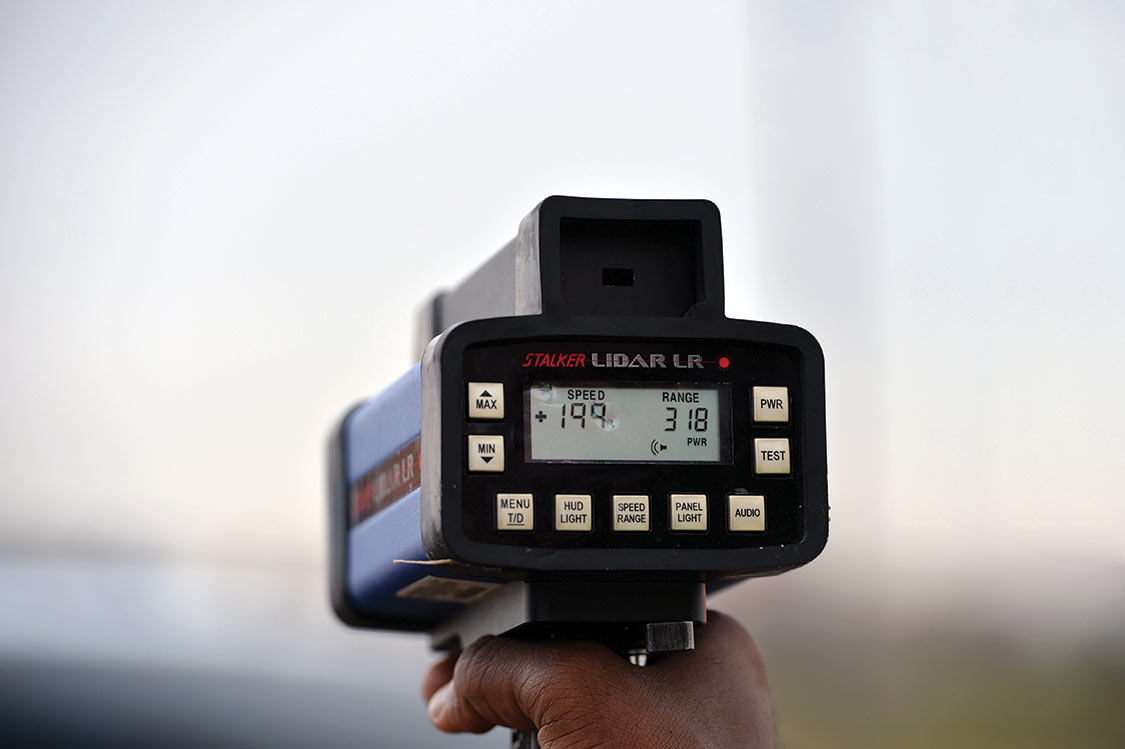
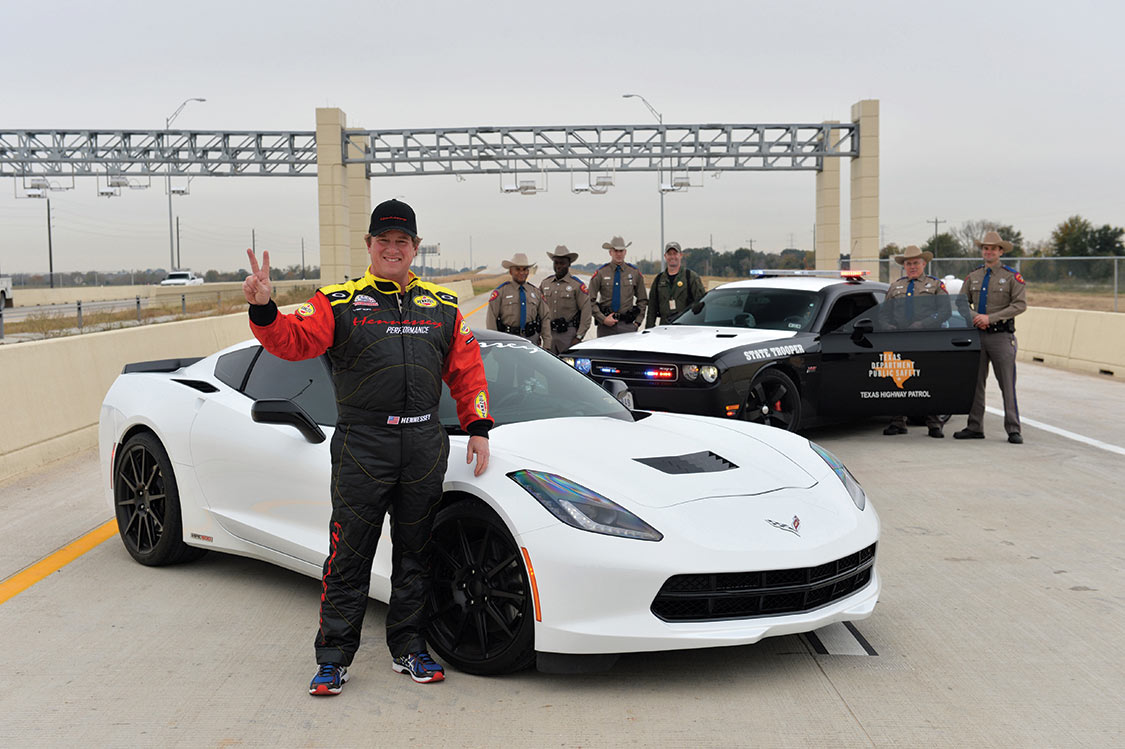
To bust through the 200-mph barrier, Hennessey fit the C7 with long-tube headers, ported factory LS cylinder heads, high-flow cats, an HPE camshaft and HPE tune. Add a 100-hp nitrous shot to this chemistry and you close the 20-mph gap. And if you can write Hennessey a $22,500 check in addition to the cost of your C7 Corvette, you can close that gap too if you know what you’re doing. You can find HPE at the Lonestar Motorsports Park just 45 minutes west of Houston along I-10 where Hennessey shakes down all of its high-performance packages.
We use cookies to enhance your browsing experience, serve personalized ads or content, and analyze our traffic. By clicking "Accept All", you consent to our use of cookies. Visit our Cookie Policy for more info.
Notifications
Share Link